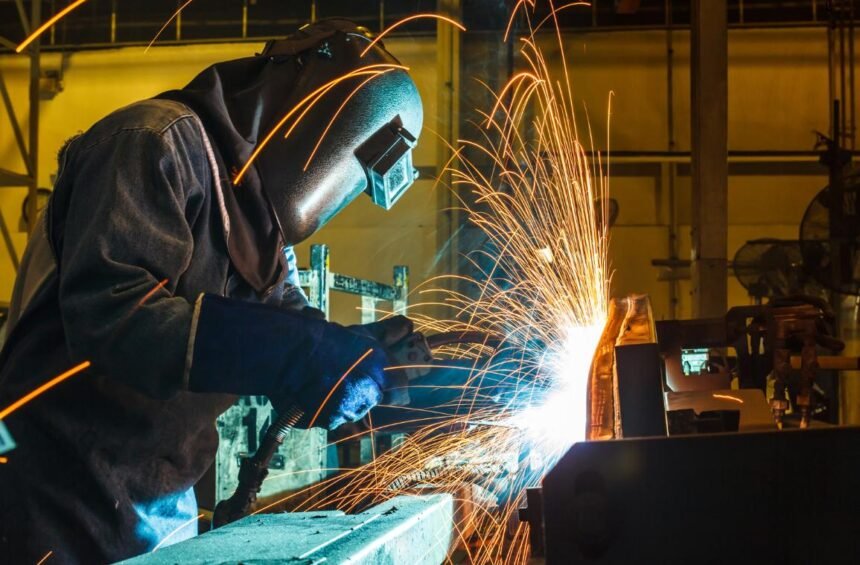How you connect electrodes in welding is crucial. Expertise in polarity is vital as it directly affects the quality of the weld. By optimizing polarity settings, manufacturers can enhance welding processes, improving product performance, efficiency, and cost-effectiveness. Experts recognize that selecting the correct polarity for different applications—such as deep penetration or minimizing spatter—ensures stronger, more reliable welds and better overall outcomes.
- Influences Arc Stability
Polarity in welding, whether it’s Direct Current Electrode Positive (DCEP), Direct Current Electrode Negative (DCEN), or Alternating Current (AC), significantly impacts arc stability. DCEP provides a stable arc by focusing heat on the workpiece, which is ideal for precise welding tasks. DCEN, on the other hand, concentrates heat on the electrode, which can lead to less stable arcs and more electrode wear.
AC, which alternates polarity, helps balance heat distribution and is useful for materials like aluminum, where it cleans the surface and maintains arc stability. Understanding how polarity affects arc stability in production welding helps welders choose the right settings for consistent, high-quality welds, improving efficiency and product quality in manufacturing and repair welding.
- Controls Weld Penetration
In welding, polarity directly influences weld depth, essential for achieving solid and reliable joints. Polarity affects the amount of heat generated, thereby impacting the depth of penetration and the strength of the weld. For instance, while Direct Current Electrode Positive (DCEP) polarity directs more heat toward the workpiece, reverse polarity minimizes burn-through on thin workpieces, thus producing high-strength welds crucial for structural integrity and durability in manufacturing processes. However, proper controls are vital for sensitive components.
Polarity helps in efficient heat distribution, allowing for better melting of the base material, resulting in improved fusion and more robust welds. Mastering this aspect of welding requires expertise, as incorrect polarity can lead to insufficient penetration or weak welds, compromising the final product’s performance. A reputable industrial welding company like Micro Weld will select the most suitable polarity and make necessary adjustments to ensure optimal penetration and meet stringent quality standards.
- Helps Mitigate Spatter
The dispersal of molten metal droplets around the weld area is a welding challenge that requires mitigation. Polarity plays a significant role in controlling spatter. For instance, Direct DCEP generally produces less spatter compared to DCEN. DCEP’s heat distribution creates a more stable arc and smoother weld, leading to fewer droplets and a cleaner weld surface.
That can significantly influence the value and aesthetic quality of the final product. However, expertise is essential in selecting the correct polarity for specific welding types and applications, such as TIG welding. That can minimize spatter and improve weld quality. Skilled welders can make informed decisions about polarity to ensure optimal results and reduce the need for extensive post-weld cleanup.
- Influences Material Compatibility
The type of materials can impact how it reacts to polarities, determining the quality and strength of the weld. For instance, aluminum, which is prone to oxidation and has high thermal conductivity, often requires Alternating Current welding. Alternating polarities between positive and negative helps clean the oxide layer from the aluminum surface and promotes better fusion. That’s particularly applicable in industries commonly utilizing aluminum, such as aerospace, automotive, and consumer goods manufacturing.
Utilizing the appropriate polarity for each material ensures optimal weld performance, enhances component appearance, and reduces the risk of defects. Knowledgeable and skilled welders who understand these nuances will make the right choice to achieve superior results and maintain high weld standards in diverse applications.
- Affects Weld Profile and Mechanical Properties
Polarity is crucial in shaping the weld profile and the mechanical properties of the final weld. The choice of polarity affects heat distribution and how the weld bead forms. A polarity that directs more heat to the workpiece may help create deeper penetration and a more robust weld profile. However, a balanced approach is often preferred in welding techniques with heat controls like pulse welding in TIG to optimize penetration and weld quality.
For instance, DCEP facilitates deep welding penetration, making it ideal for applications requiring robust welds, while DCEN helps in surfacing or cladding applications, which is beneficial for building up material on the surface or applying protective coatings.
In conclusion, polarity significantly impacts welding outcomes, such as in TIG applications, affecting penetration, bead formation, and overall weld quality. Understanding polarity parameters is crucial in creating a quality weld that aligns with your requirements. However, to ensure optimal results and value for money, it’s vital to outsource welding to a reputable company like Micro Weld, which has expertise and skill in all aspects of professional welding. Such professionals will select the best choices and combinations, delivering superior performance and efficiency.










